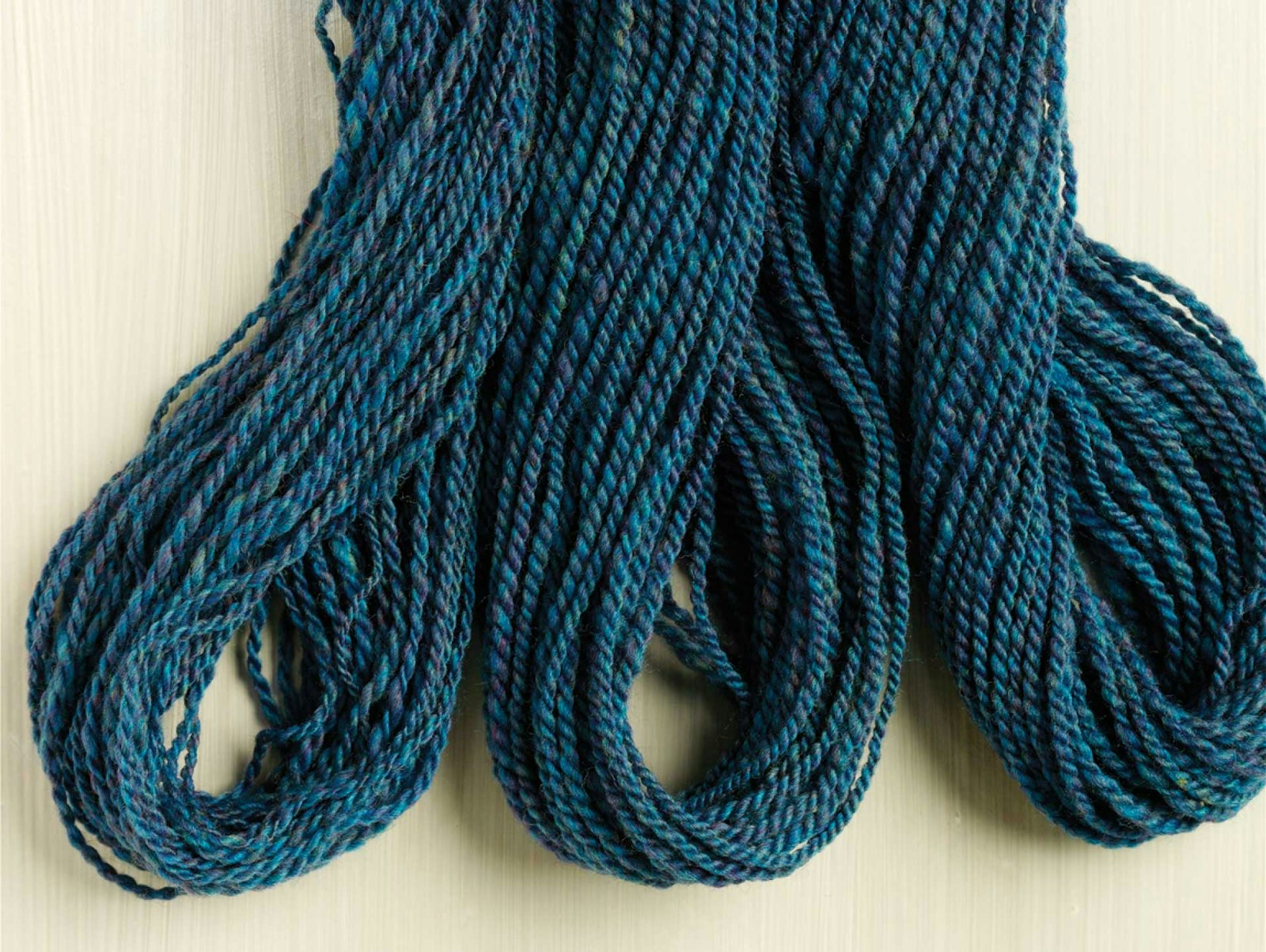Is there a spinner alive that hasn’t fallen in love with a smooth, silky ball of combed top? I think not! But the fact remains that the more organized the fibers are, the faster twist can grab those fibers and lock them into place. Commercial top is always a combed preparation and is about as organized as it gets. Combing removes all the short, weak fibers, and the remaining long fibers are closely lined up in parallel order right next to each other. Think of top as a precision drill team—all the fibers are marching in step, close together, shoulder to shoulder, perfectly lined up, platoon after platoon moving as one unit. No wonder top is so sleek and smooth. Because these fibers are so well organized, they can become a beautiful, smooth yarn or a slubby, overtwisted tangle. It all has to do with how the twist meets the fibers and turns them into yarn. Here are some tips to make those fibers march the way you want them to.
Know what you’re working with
Before you start spinning, check out your fiber (figs. 1–3). Grasp one end of the top and pull off just a staple length of the fibers to see how long they are. Long fibers require more space between your hands when you draft than short fibers. Did those fibers pull out easily, or are they compacted (fig. 4)? See if the fibers pull out easier from the other end—it can make a difference (figs. 5–6). Then pull off a section 18 to 24 inches long and gently shake it out. Is it a wide ribbon of fibers or a narrow one (fig. 7)? Sometimes just opening up the top with a shake is all you have to do to make spinning easier. Remember to keep the fibers organized so you can make a smooth yarn. The best way to accentuate the beauty of those combed fibers is to spin them with a worsted draw.
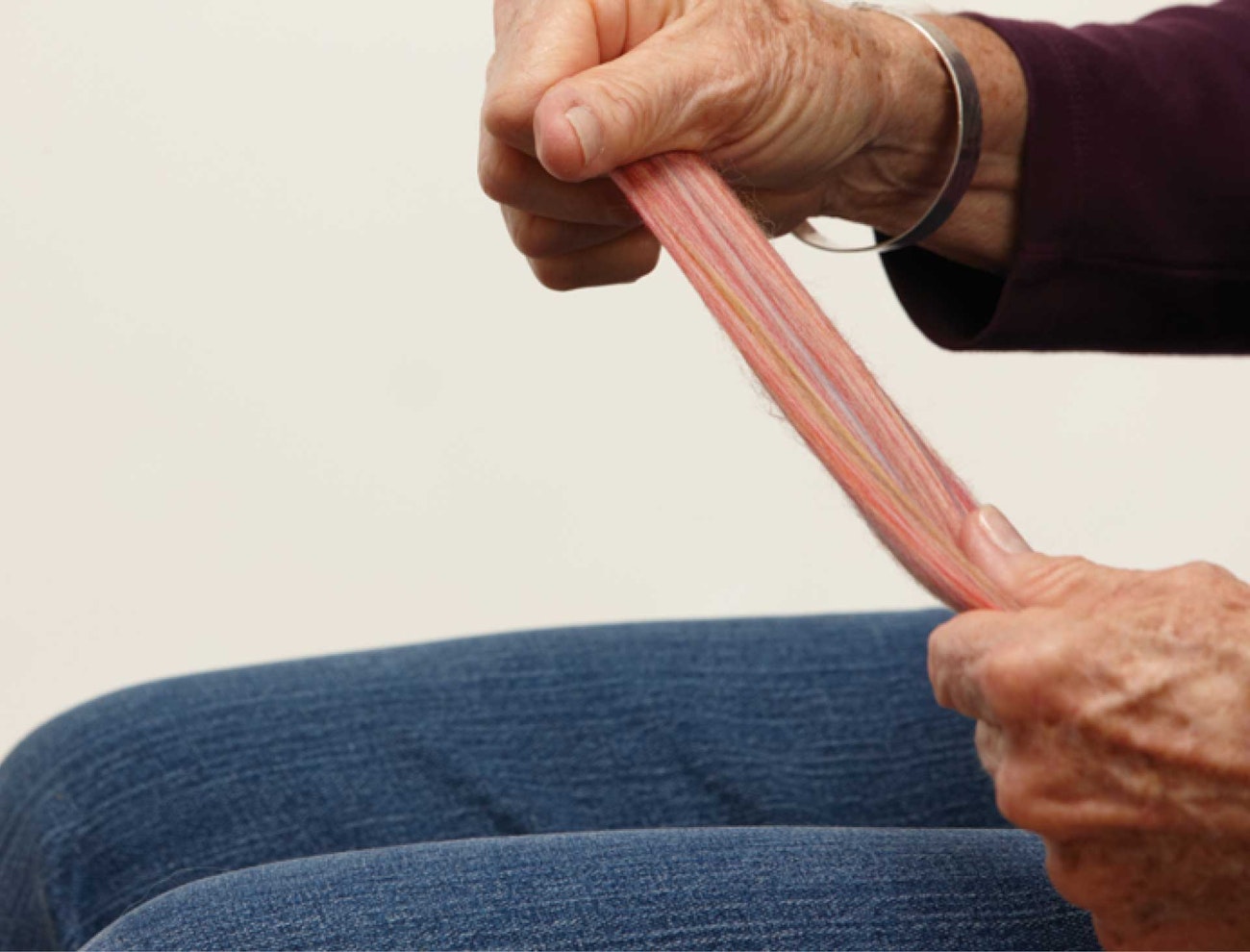
Figure 1
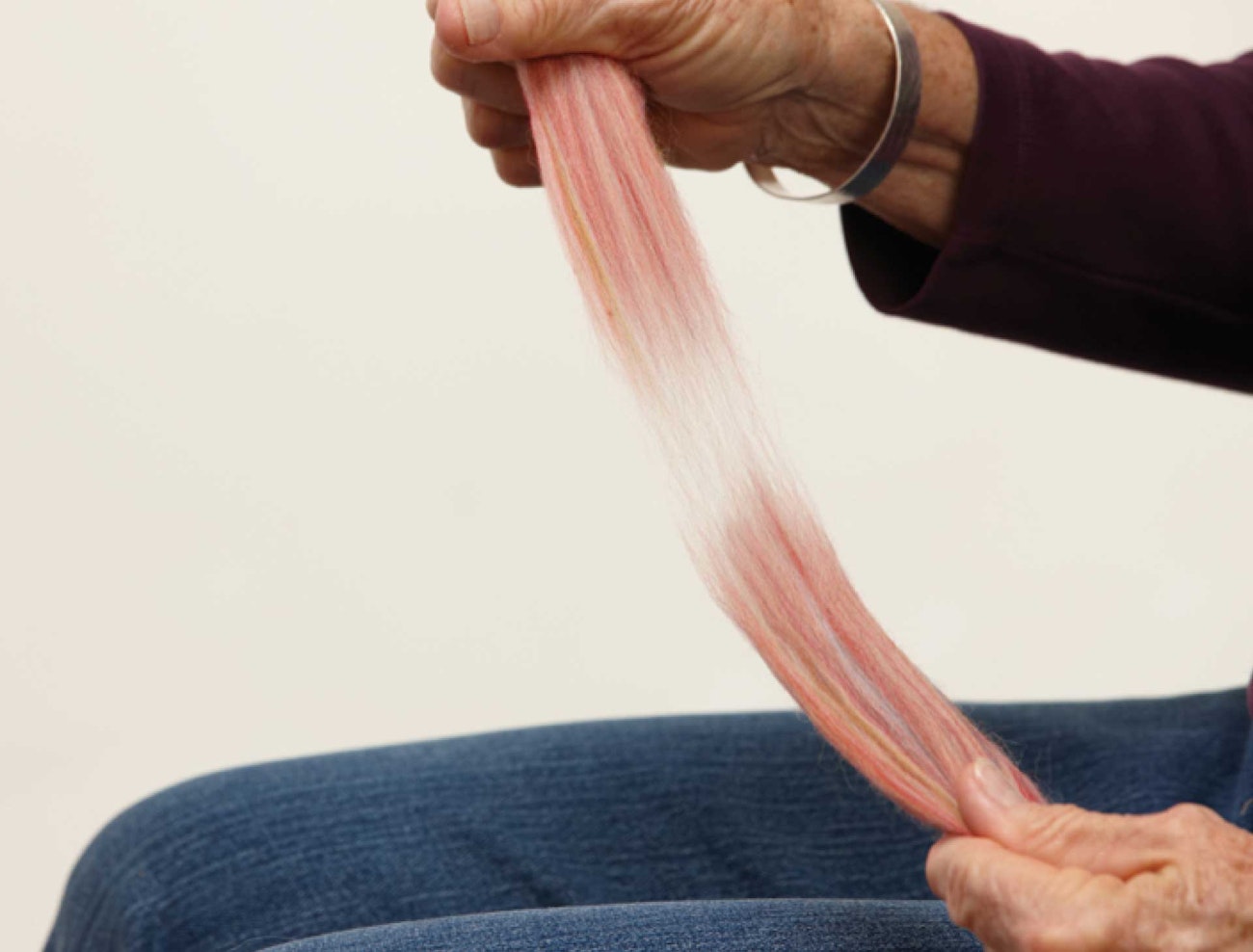
Figure 2
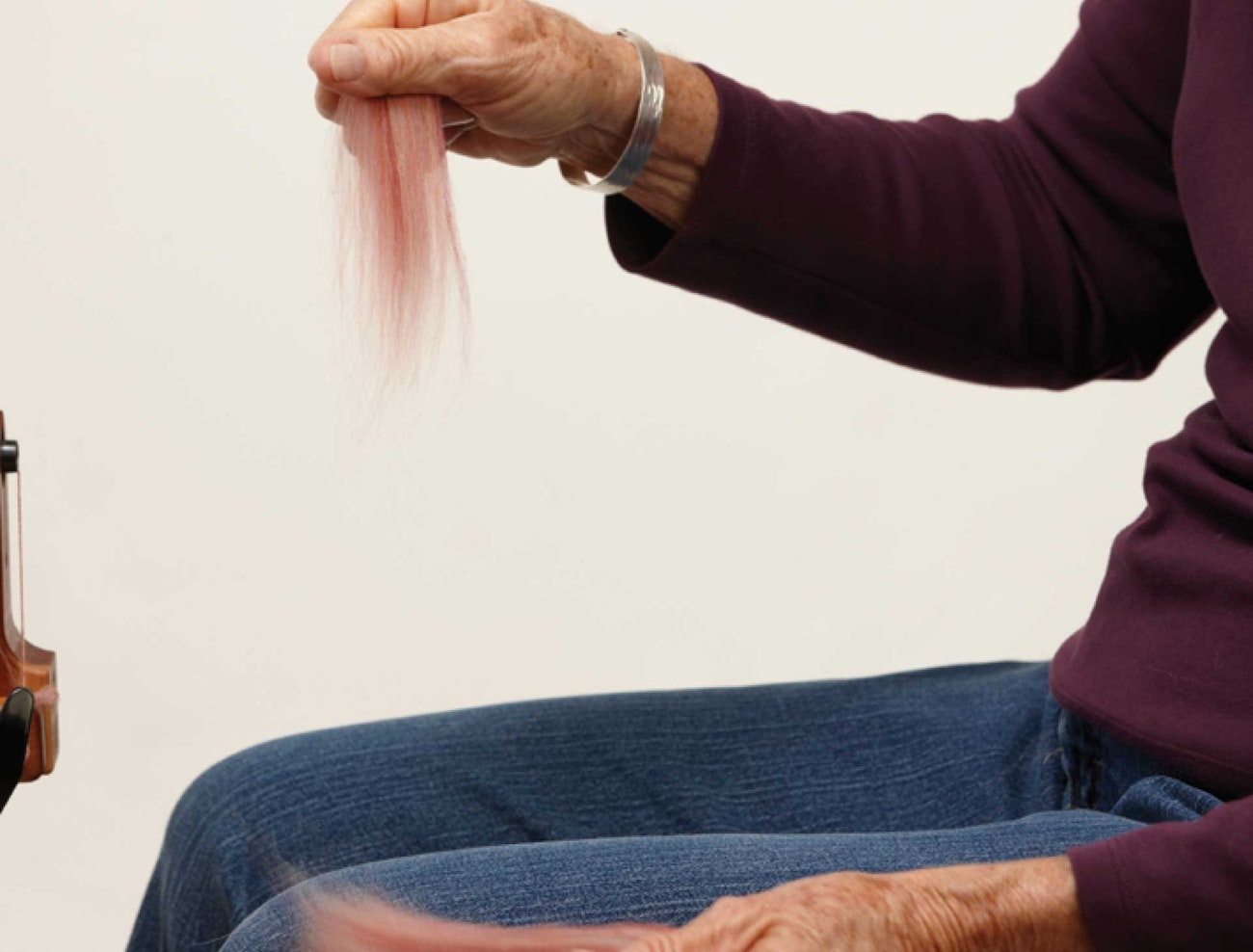
Figure 3
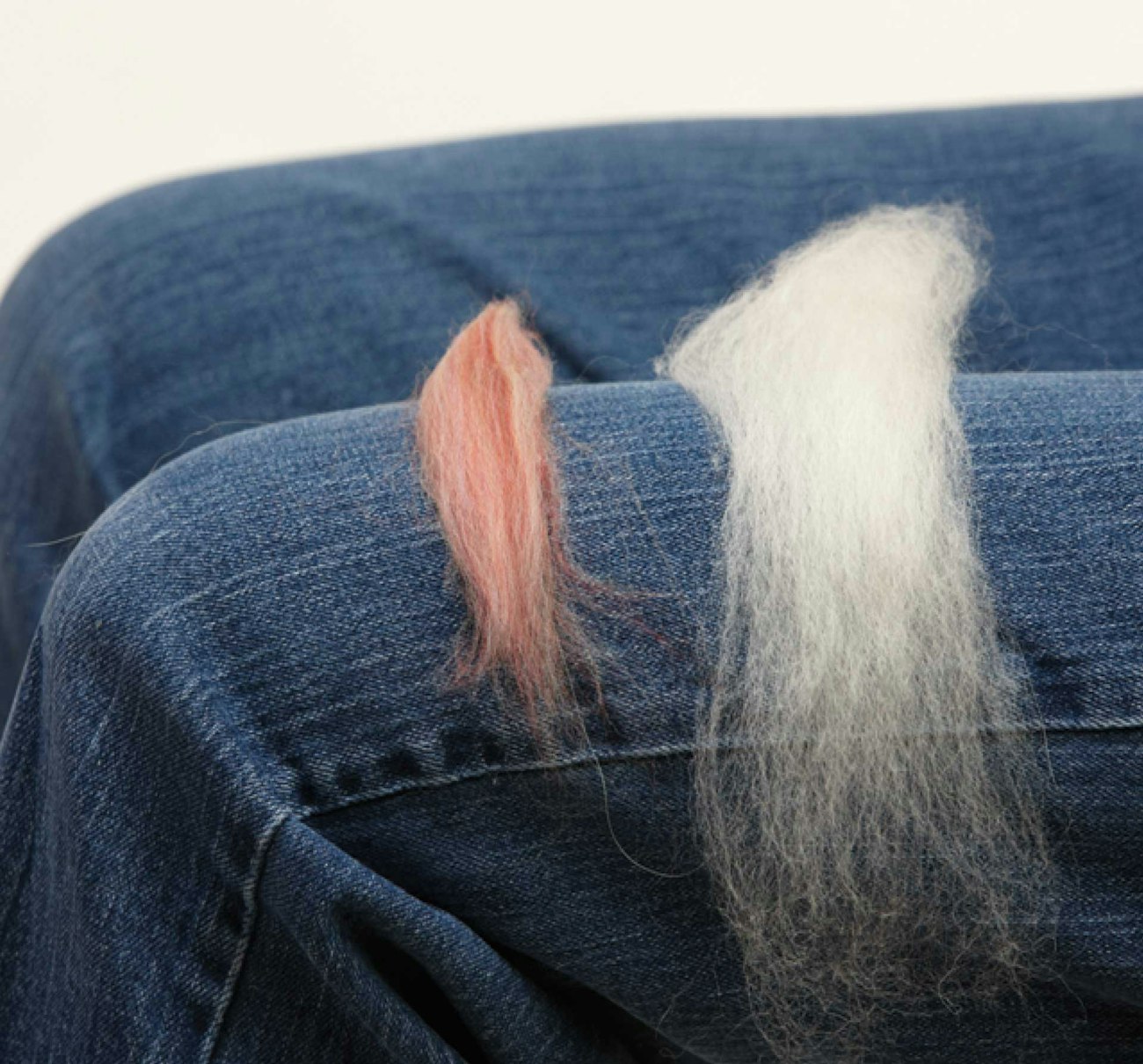
Figure 4
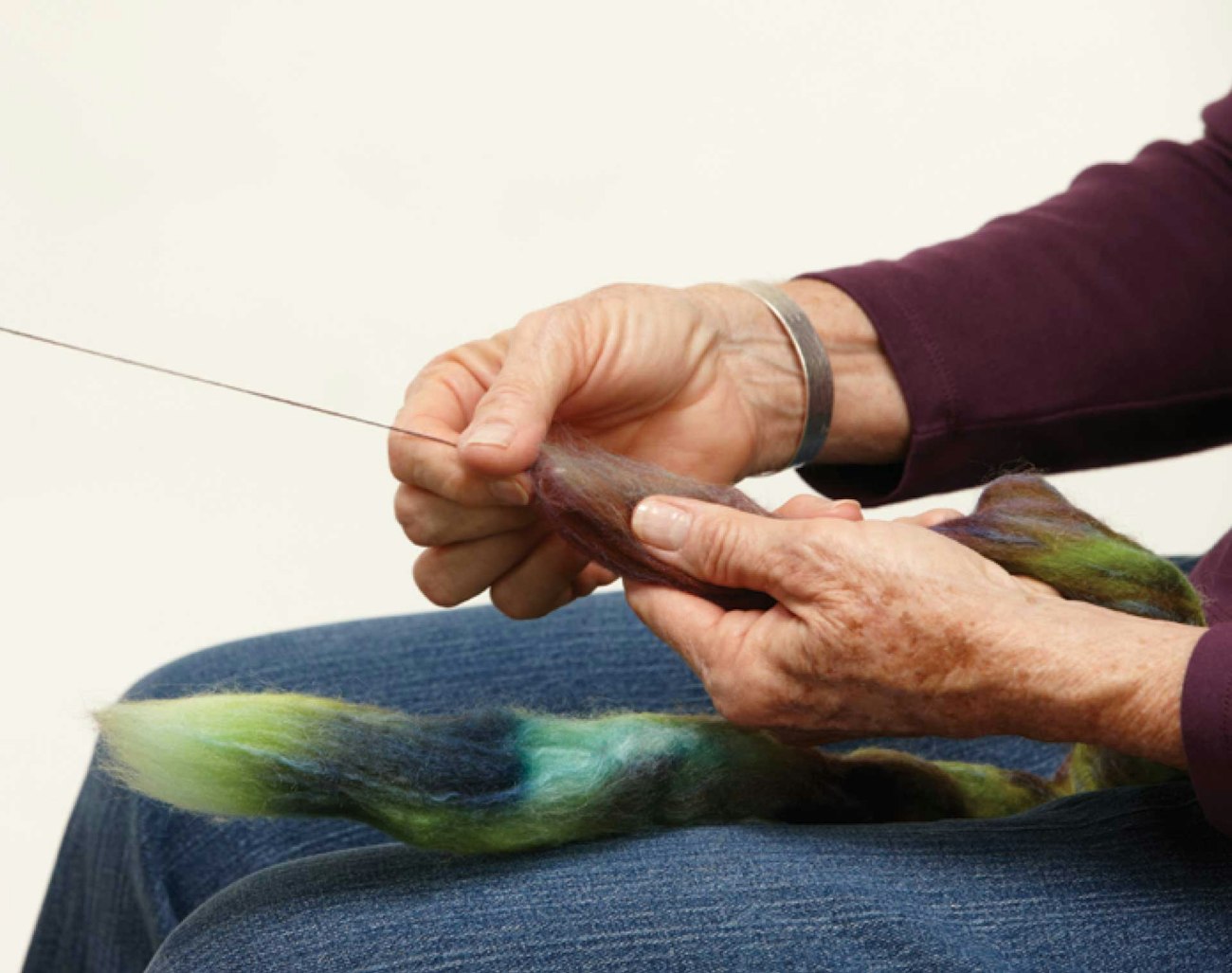
Figure 5
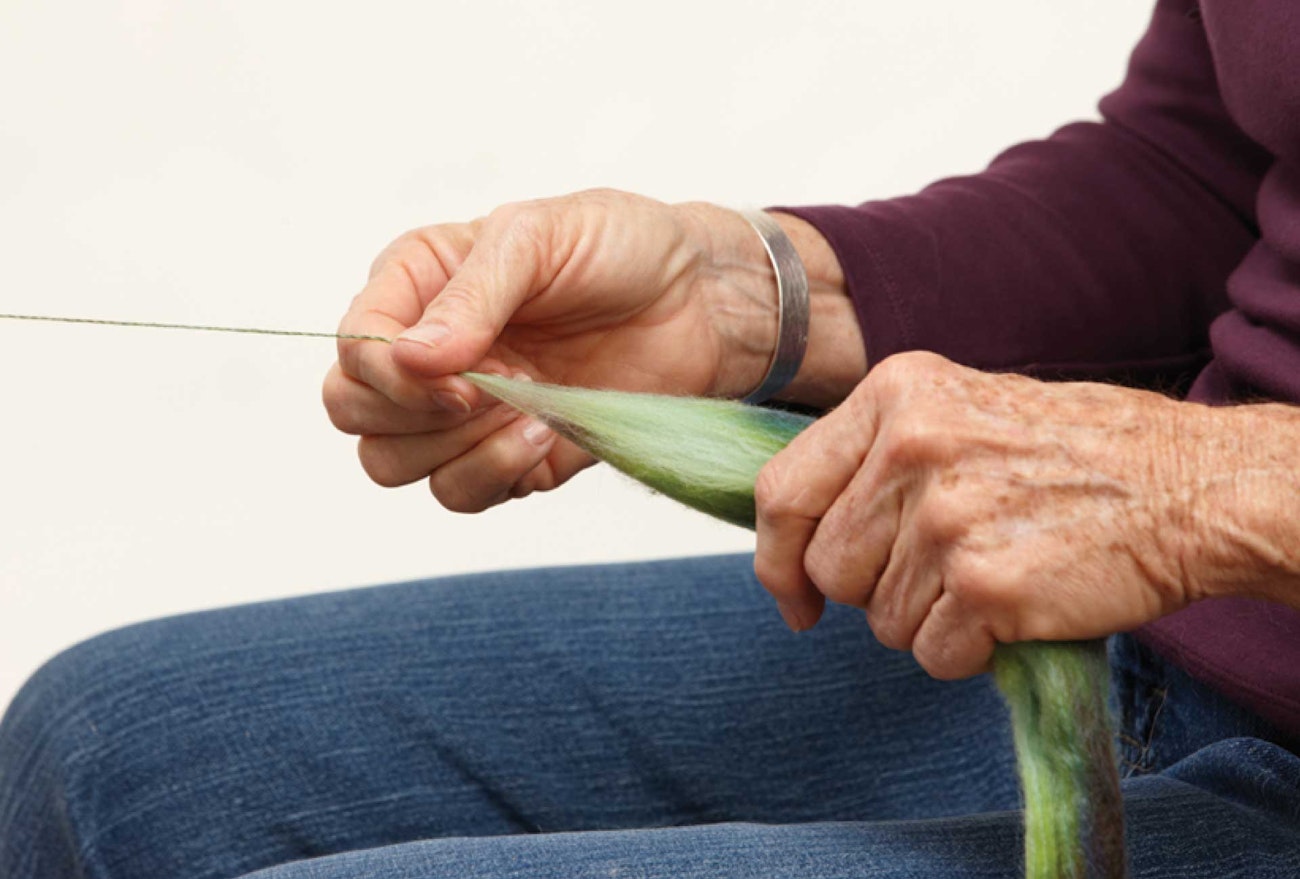
Figure 6
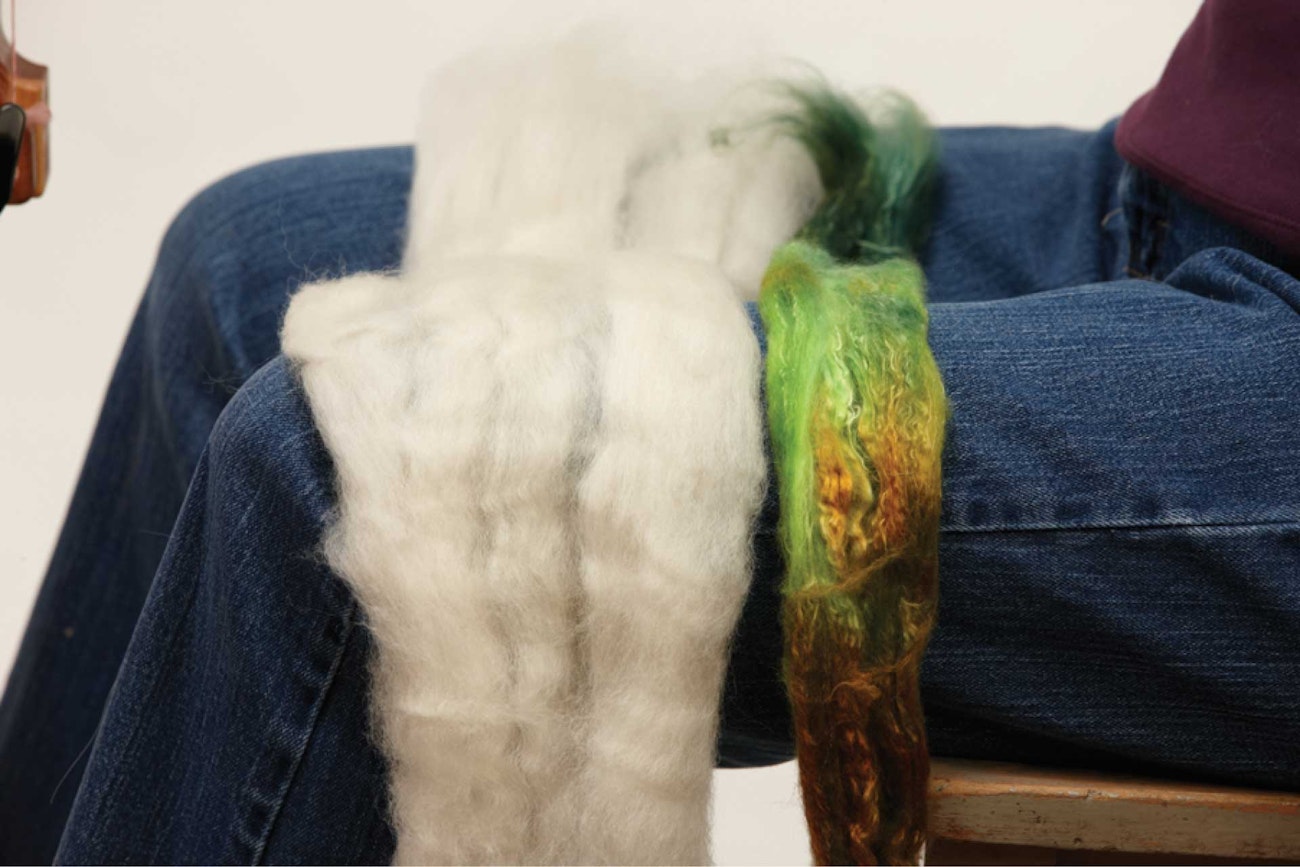
Figure 7
Worsted draw
A worsted draw is a short forward draw with no twist between your hands, not even the tiniest bit (figs. 8–10). After you’ve joined your fiber to the leader, your front hand (drafting hand) pinches and pulls out a section of fiber, feeds it toward the wheel, slides back bringing the twist over those drawn-out fibers, and then pulls out another length of fiber and smooths back again. Keep the rhythm going: draft forward, smooth back, draft forward, smooth back. Keep your fingers closed on your drafting hand; if you let twist sneak between your hands, it will lock the fibers together and you can’t draft. Don’t pinch so hard with your front hand that it hurts—pinch just enough to keep the twist at bay. The distance between your hands will depend on how long the fibers are; if your hands are farther apart than the staple length of the fiber, you won’t have as much control over the size of the yarn.
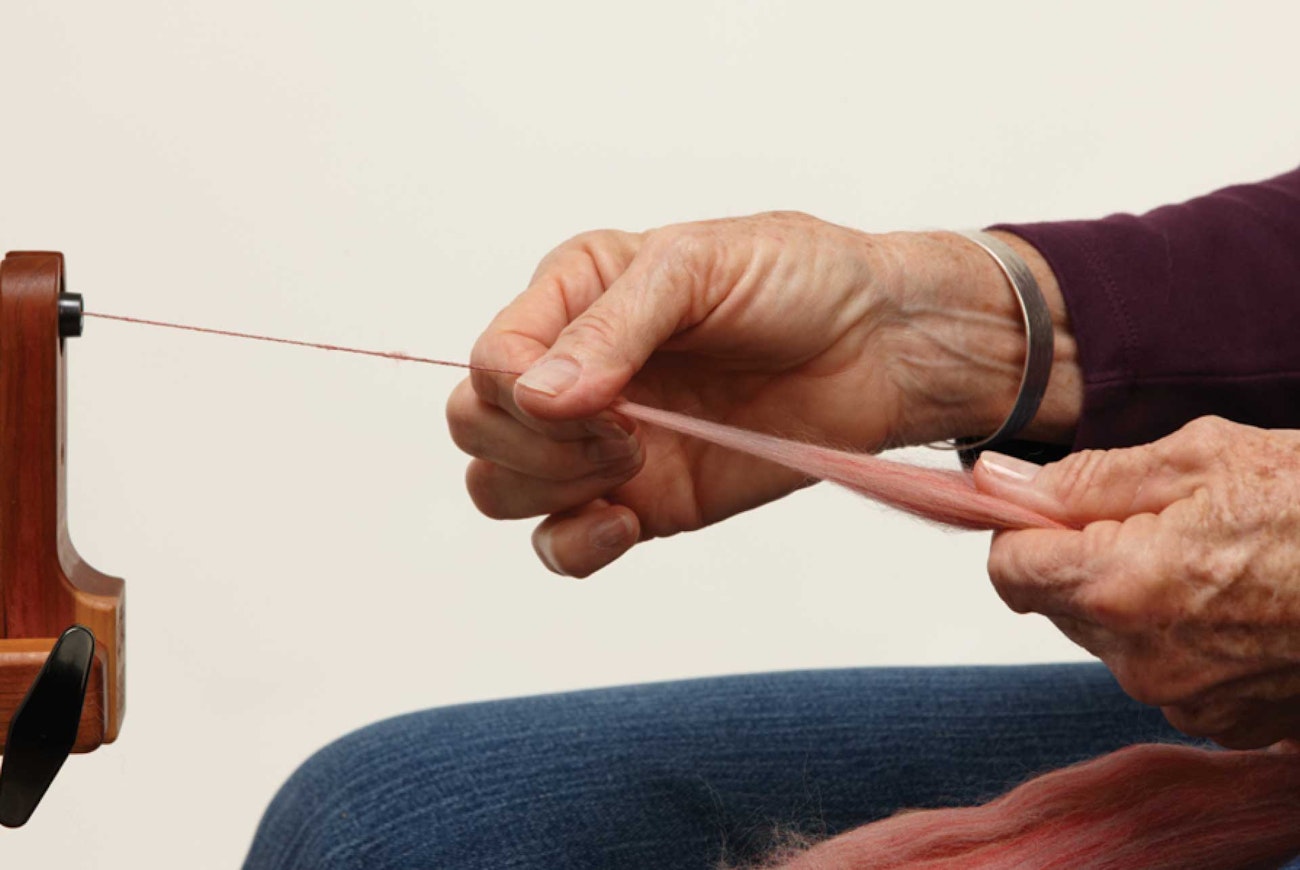
Figure 8
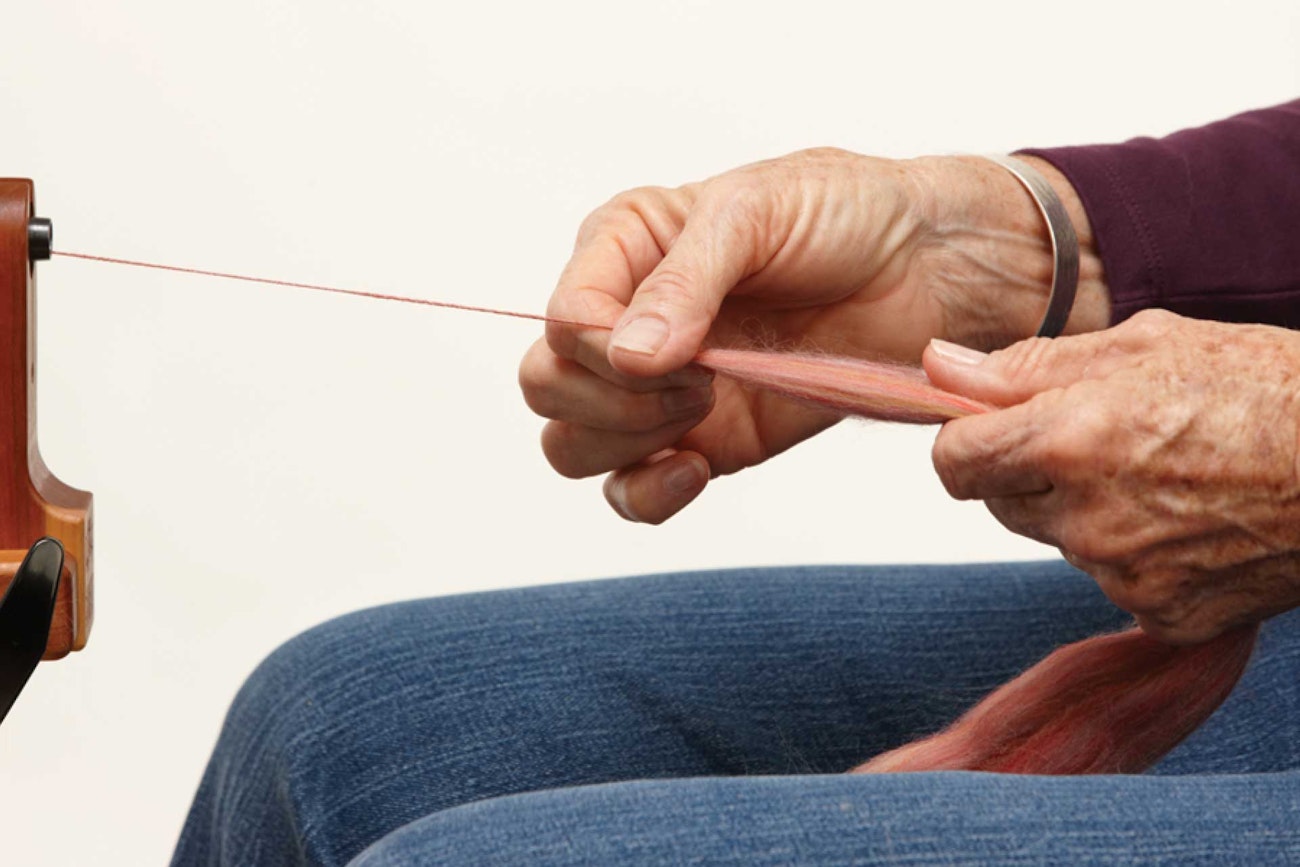
Figure 9
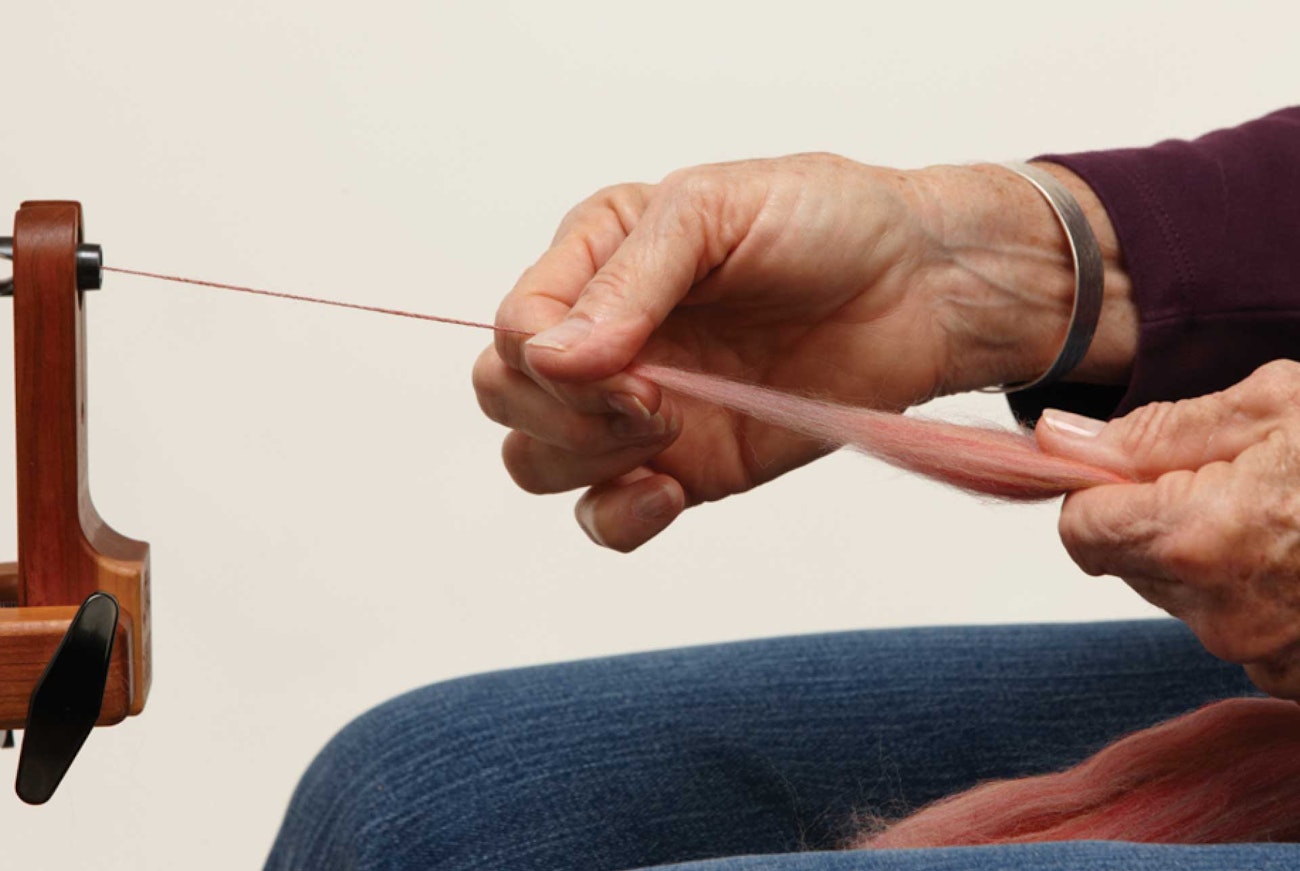
Figure 10
If your hands are too close, the fibers can’t move out of your fiber hand easily and your yarn will get extra twist, making drafting difficult. Your drafting hand is doing most of the work, pulling and smoothing back, but the back hand (fiber hand) is busy, too. Keep it relaxed and cradle all the fibers using your entire hand and not just your index finger and thumb (fig. 11). If you are holding the fibers too tightly, they can’t move out, no matter how hard your front hand pulls. As you draft forward, your fiber hand can put a little pressure on the fiber to give the drafting hand something to pull against. Then as your drafting hand brings the twist into the fibers, relax your back hand so more fibers will be available for the next draft. Remember that spinning is not a contest of strength—finesse always wins!
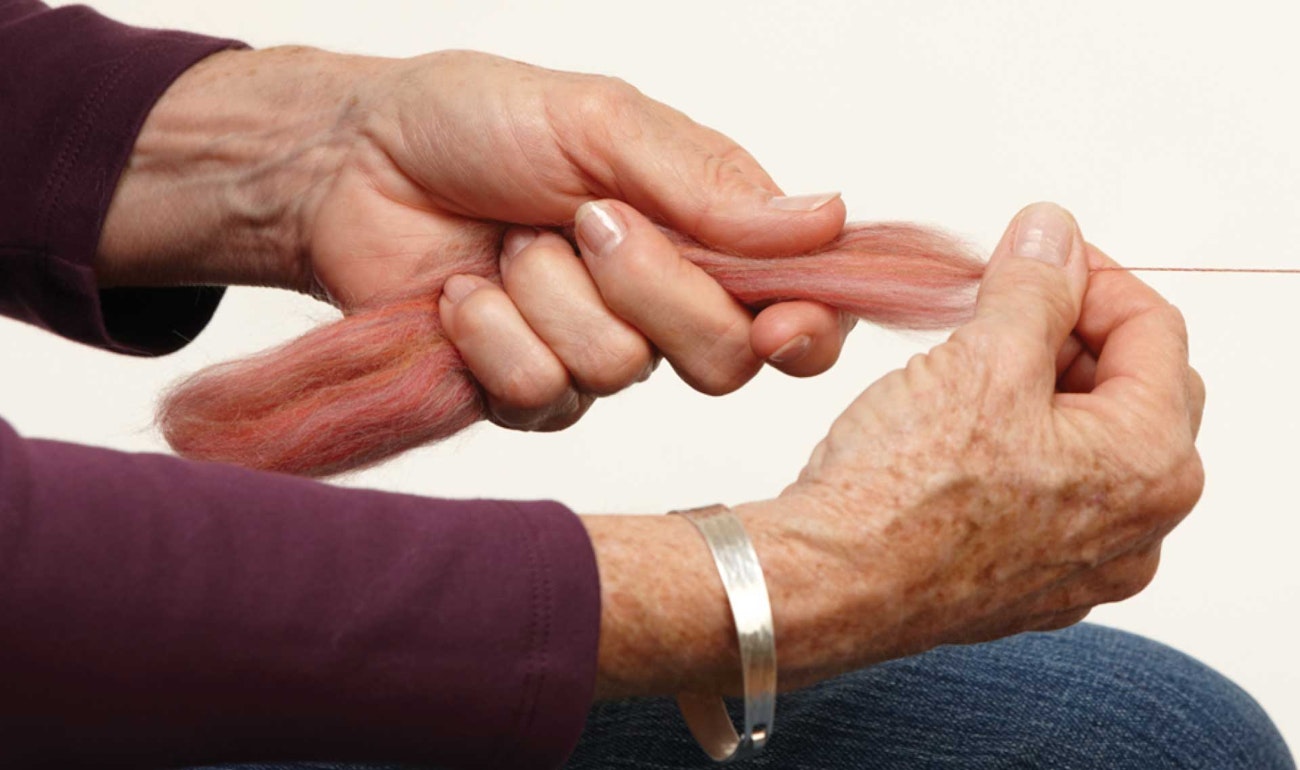
Figure 11
Avoid using just your thumb and index finger to hold the fiber because it will cause a tangled mess, as in this photo where Maggie’s thumb is inserted in the drafting zone (fig. 12).
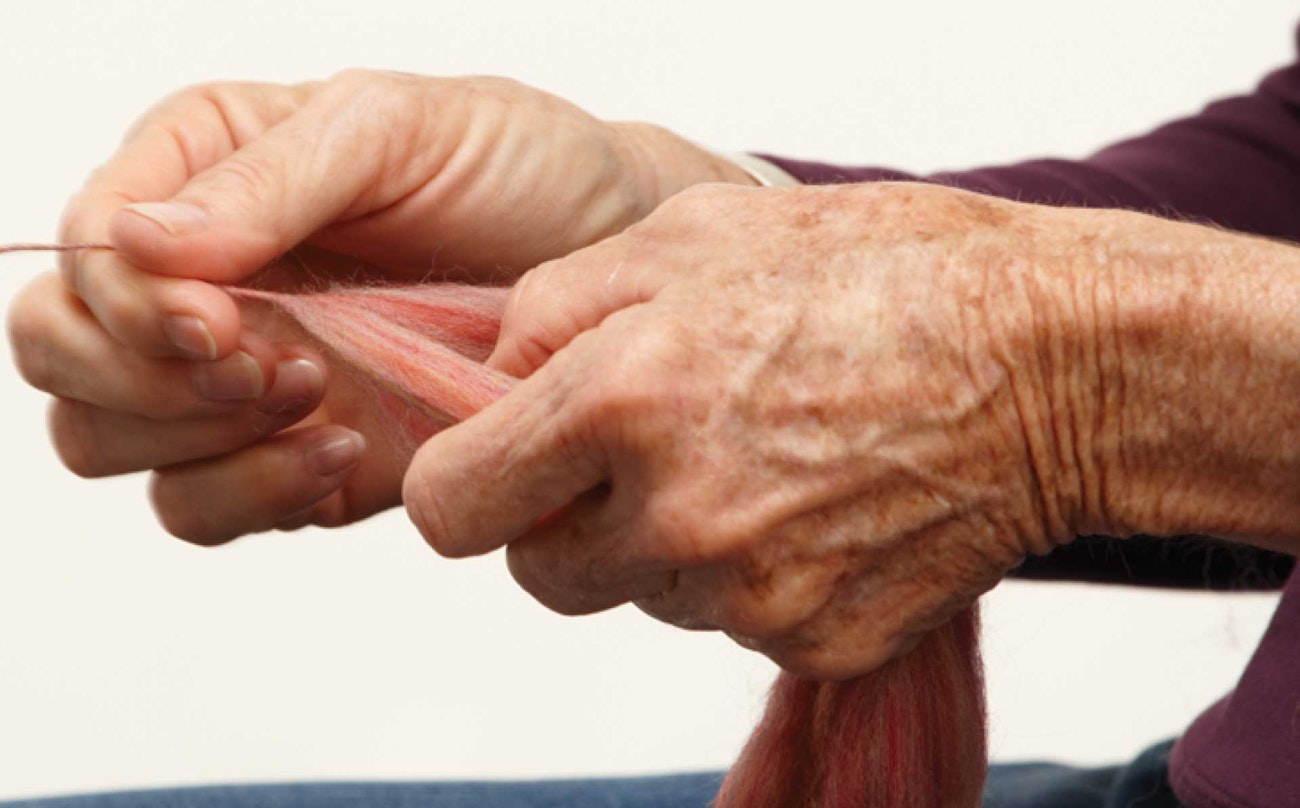
Figure 12
Keep the twist out of the area between your hands or it will be hard to draft (fig. 13).
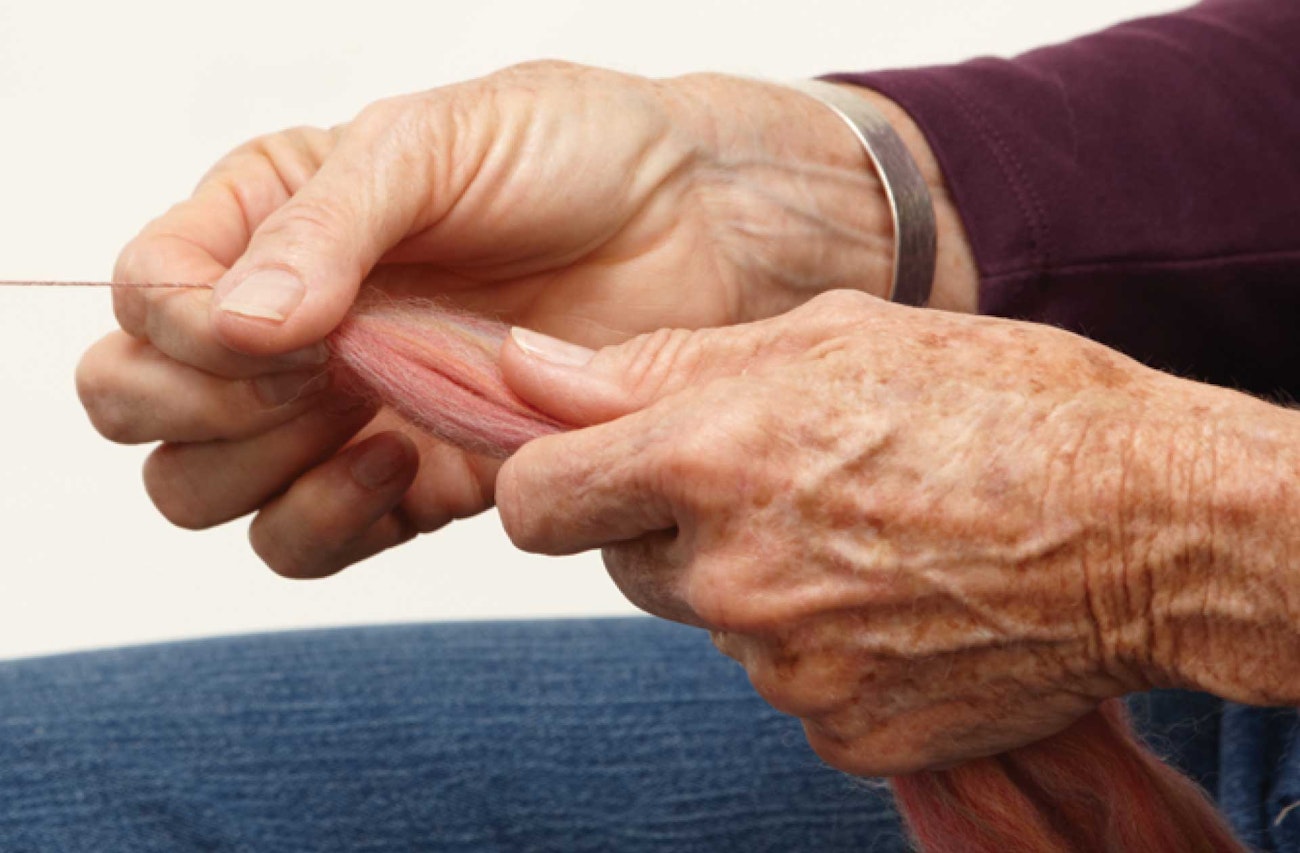
Figure 13
There are several ways to prepare top for spinning. You can spin the fiber just the way it is, vertically split the top into narrower sections so you are dealing with fewer fibers at a time, or spin across the web. You can also predraft or spin over the fold. Try all of these techniques and see which one works best for you and your project.
Spinning across the web
Do not strip or predraft the fiber. After joining the fiber to the leader, start spinning using a worsted draw and slowly move your drafting hand back and forth over the top, drawing out fibers as you go (fig. 14). Judith MacKenzie spun yarn for some amazing socks using this technique in her book The Intentional Spinner (Interweave, 2009).
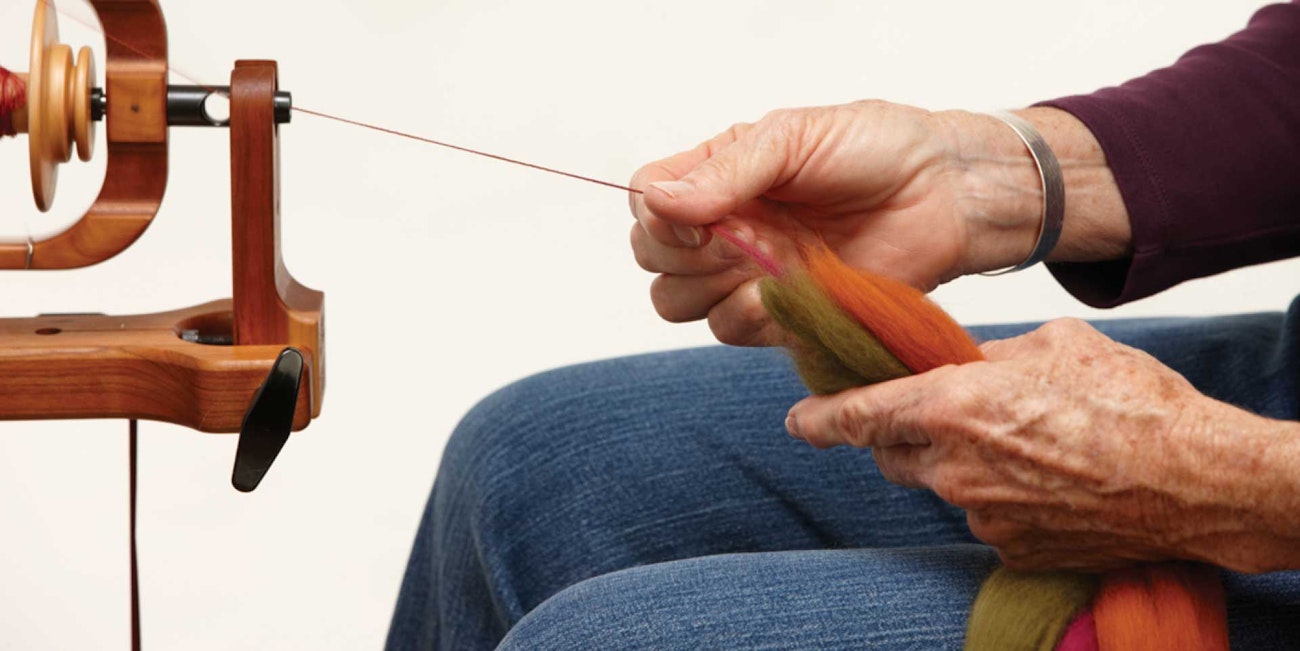
Figure 14
Predrafting
The goal of predrafting is to open the top so it isn’t as dense and to stagger the fibers so they don’t all draft out at the same time; the aim is not to reduce the fiber to its final spun size. If the fiber has been dyed after combing, predrafting may help open up slightly compressed areas.
The possibilities you’ll encounter are hands too close together (fig. 15), too far apart (fig. 16), and just right (fig. 17).
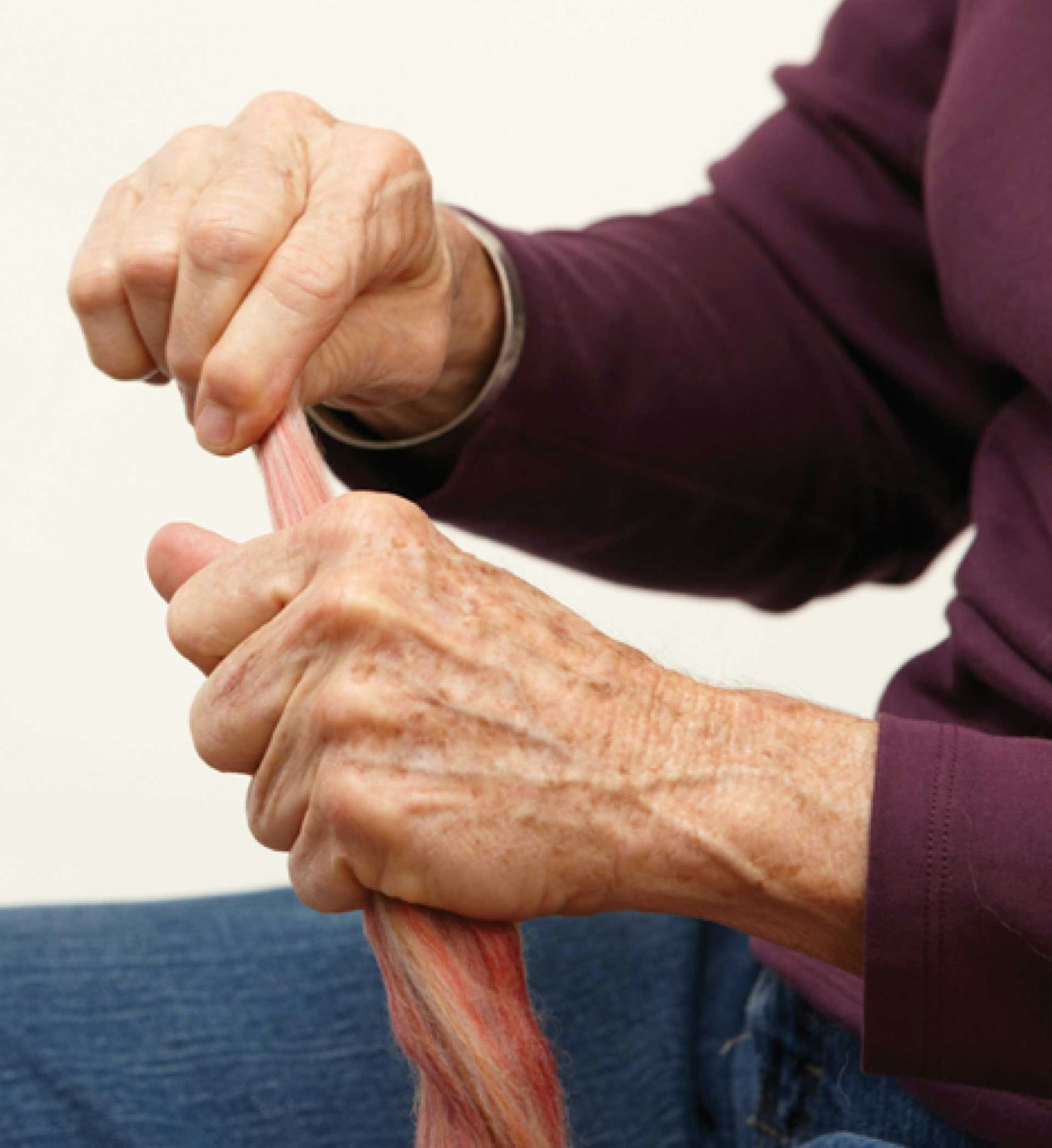
Figure 15
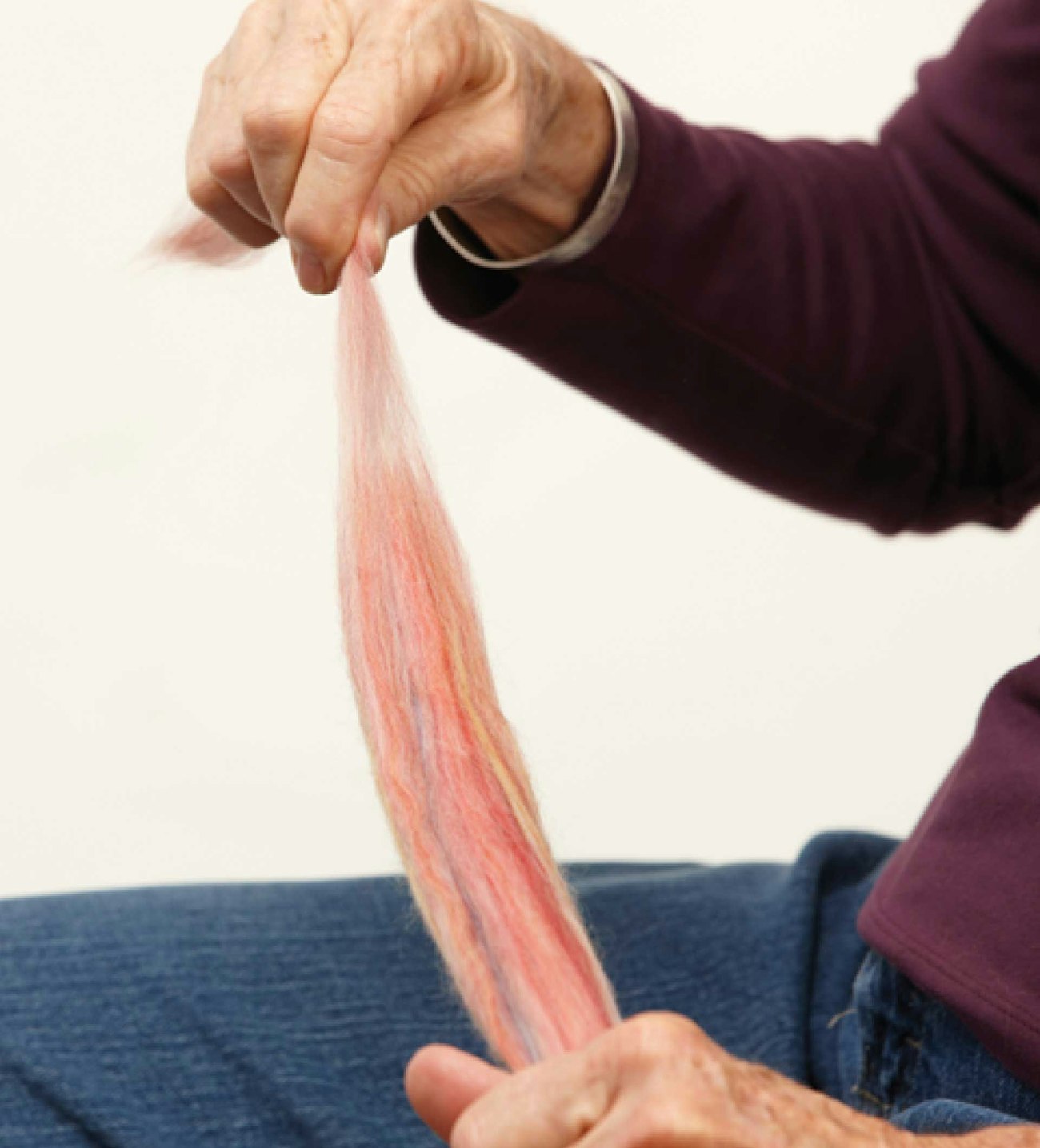
Figure 16
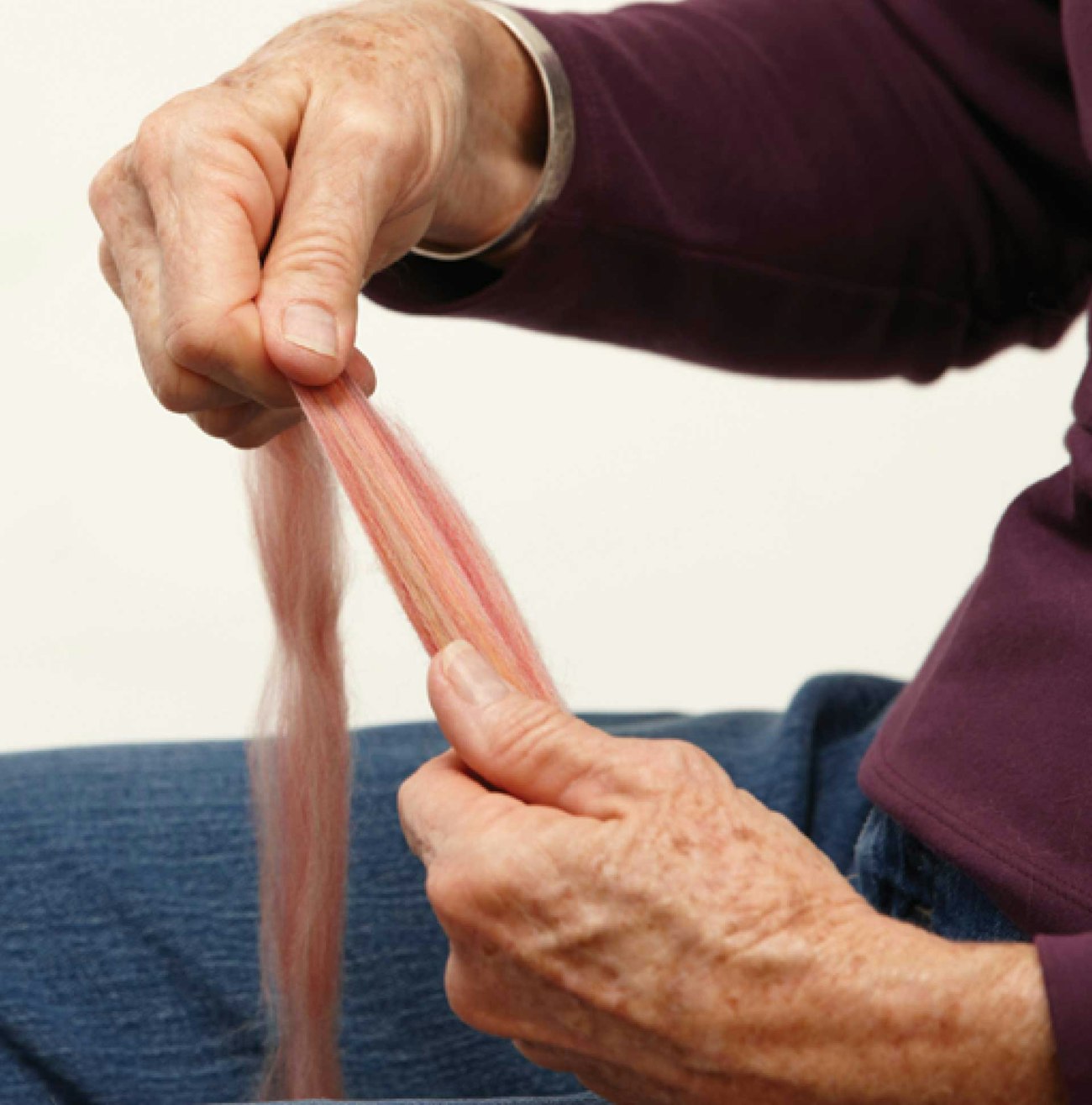
Figure 17
Hold an 18- to 24-inch section of top with your fiber hand about 6 inches away from an end and with the other hand, start pulling out fibers from that end. If fibers don’t pull out easily, increase the distance between your hands by moving the fiber hand away from the end. Don’t have a death grip with either hand! To keep the fibers organized, cradle them gently with your fiber hand and keep equal pressure on them as you pull them out with your other hand. The goal is to stagger the fibers without creating thin spots (fig. 18). If necessary, predraft a couple of times to create a smooth, narrow ribbon as organized as the original top (fig. 19). After you are done predrafting, wind the top into a little bird’s nest (fig. 20). Spin the fibers worsted draw.
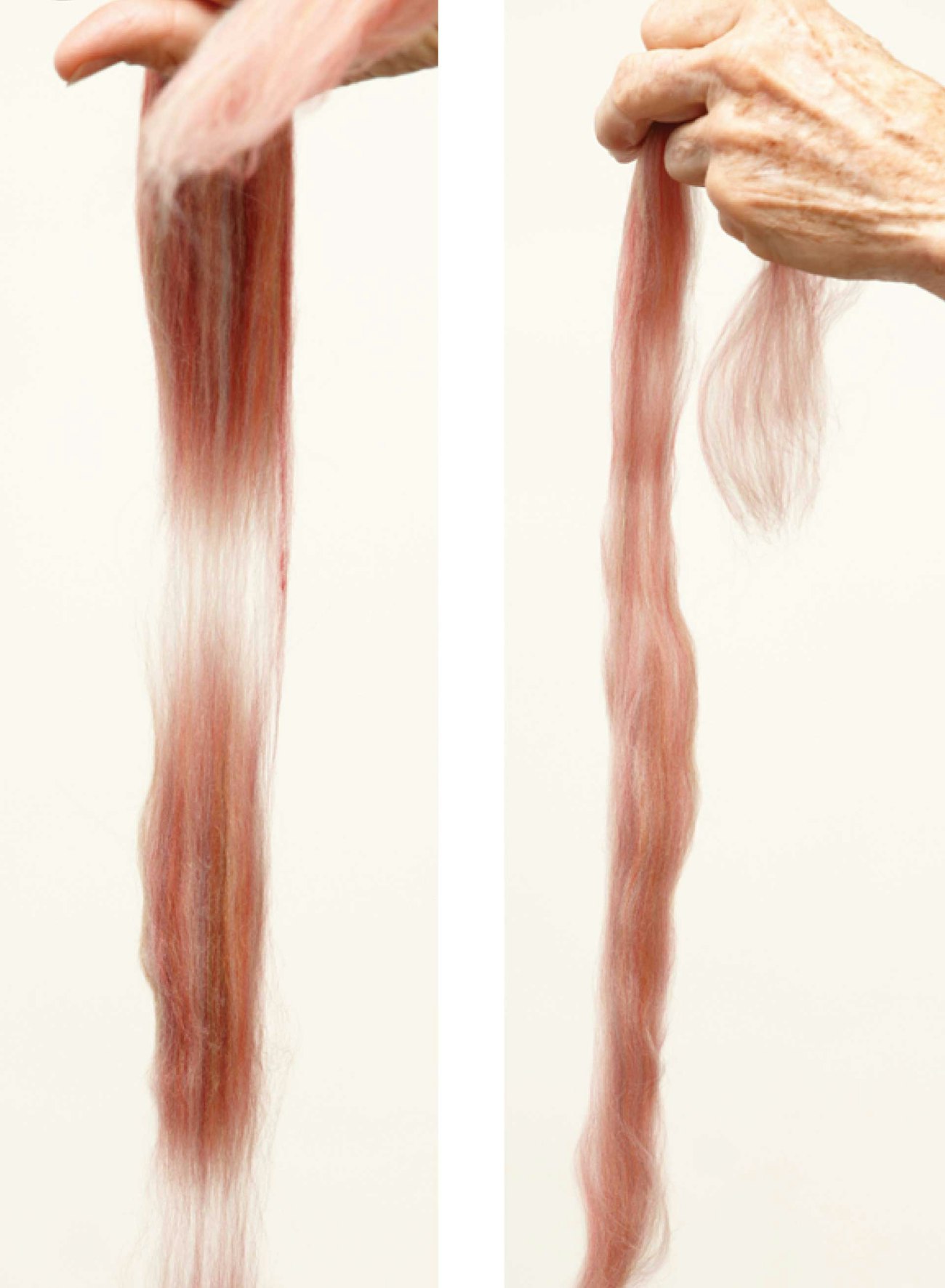
Figure 18 (left); Figure 19 (right)
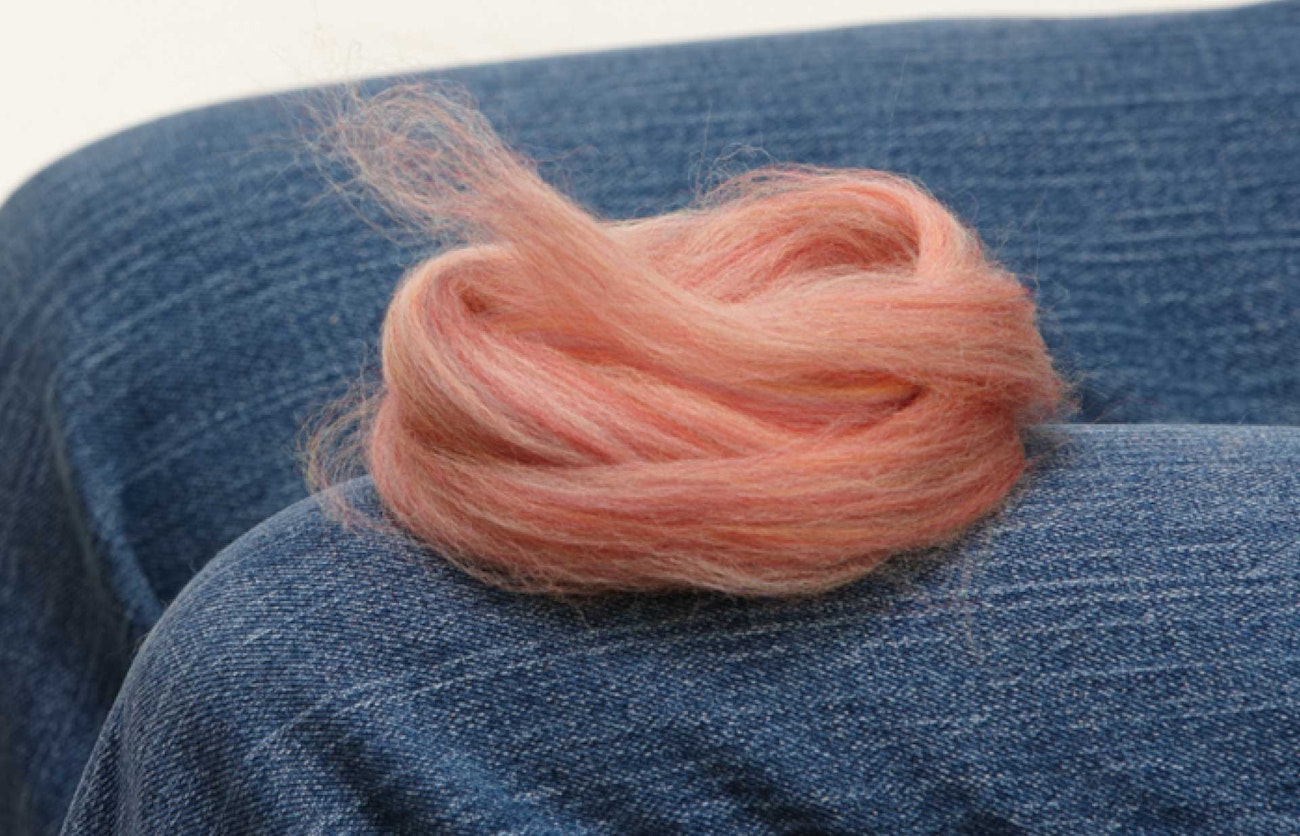
Figure 20
Over the fold
If you are getting frustrated fighting the twist, try spinning over the fold. After you spin over the fold for a while, it is easier to go back to spinning lengths of top.
Pull off a staple length of undrafted fiber and fold it over the index finger of your fiber hand so that one end of the fiber lies between your index finger and middle finger and the other end is between your index finger and thumb (fig. 21). Join by pressing the leader to the fiber with the thumb of your fiber hand, treadle, and watch the twist grab the fibers on your finger (fig. 22).
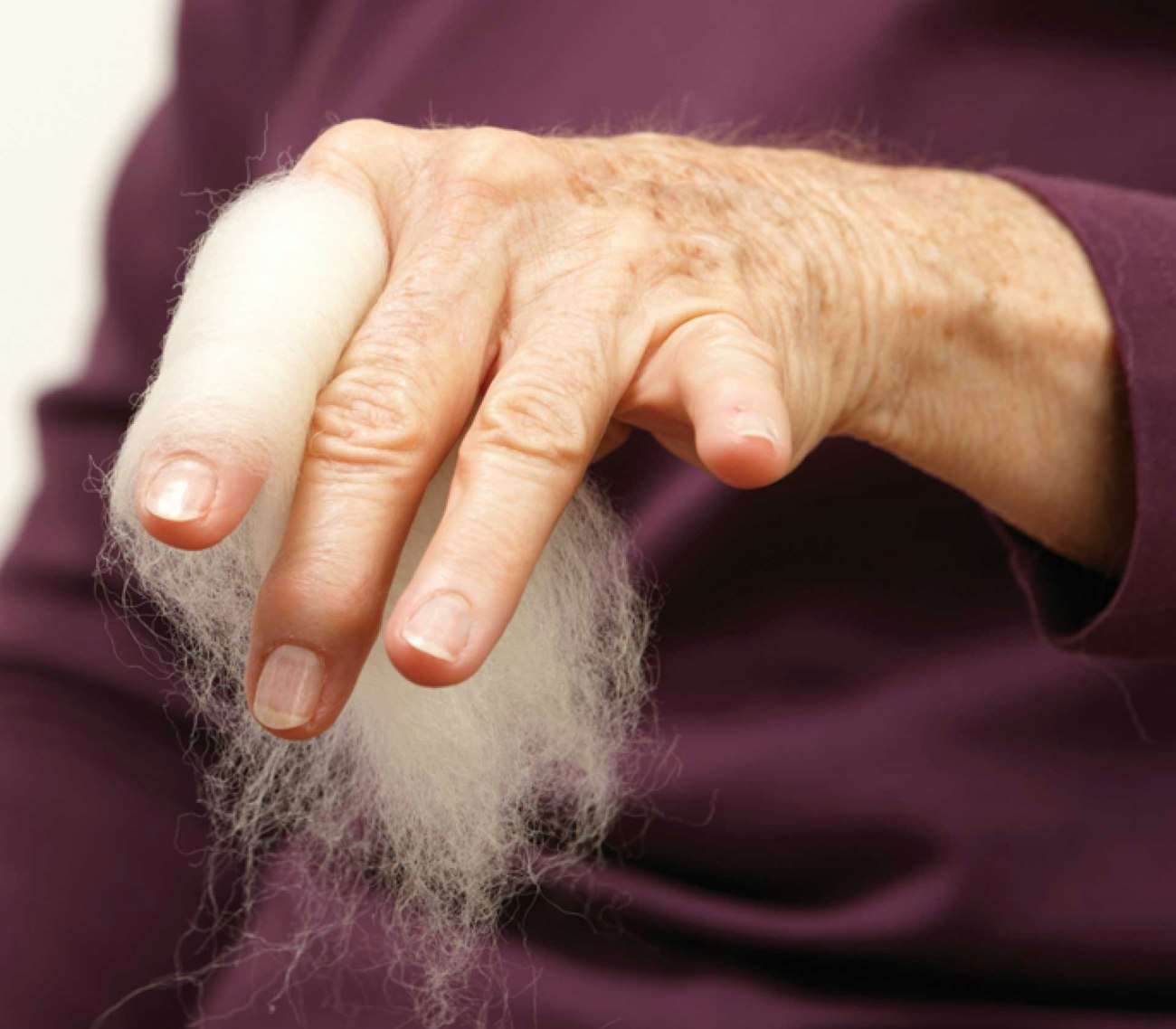
Figure 21
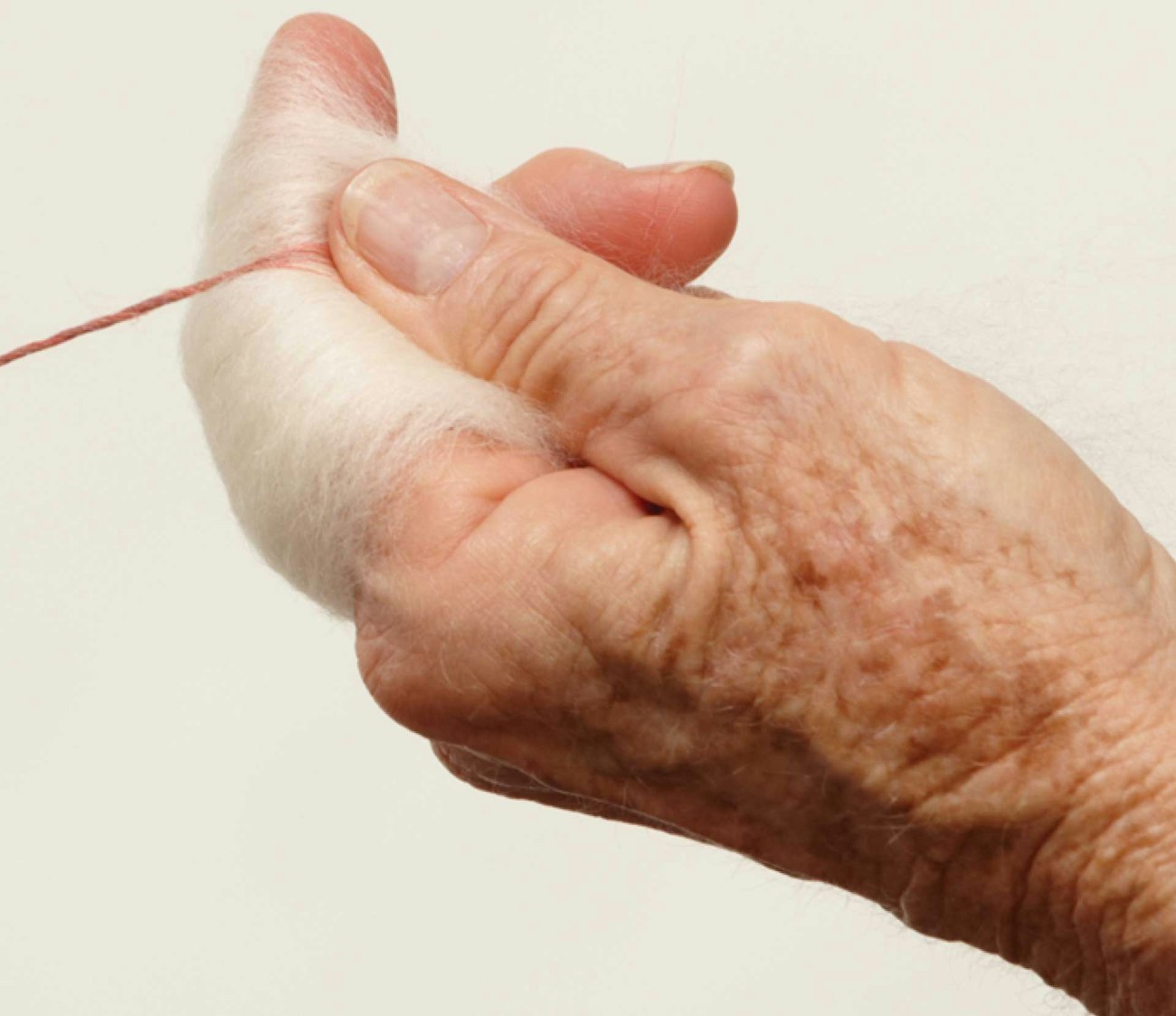
Figure 22
Start drafting (pull forward, smooth back) (figs. 23–24). The twist can’t lock up the fibers as easily because they are on both sides of your finger (fig. 25). Draft off the top of your finger so you are folding the fibers in half. This technique will not give you as smooth and strong a yarn as spinning from a length of top, but the yarn will still be smooth. Since you are spinning only one staple length at a time, you have lots of joins, and you will get very good at making joins.
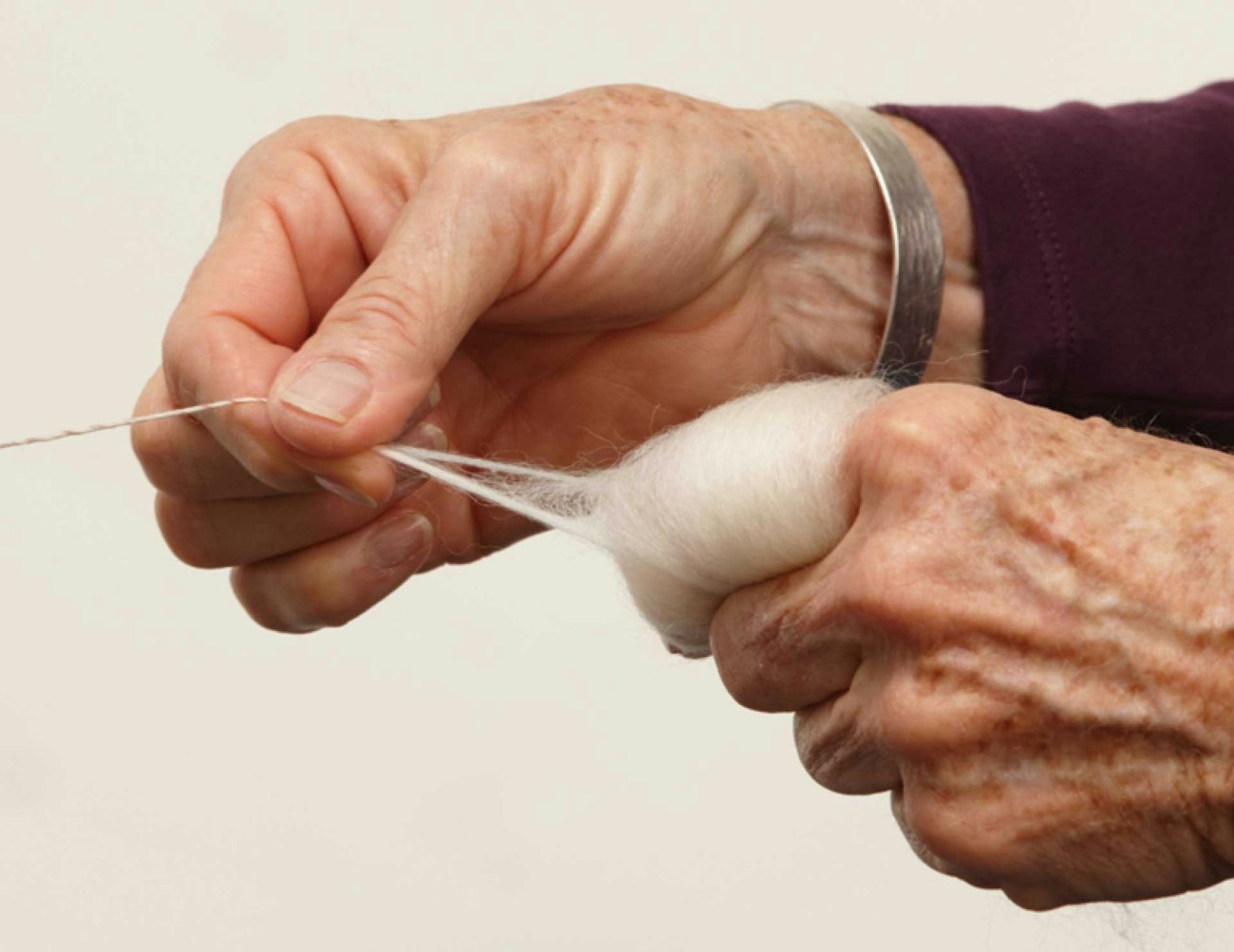
Figure 23
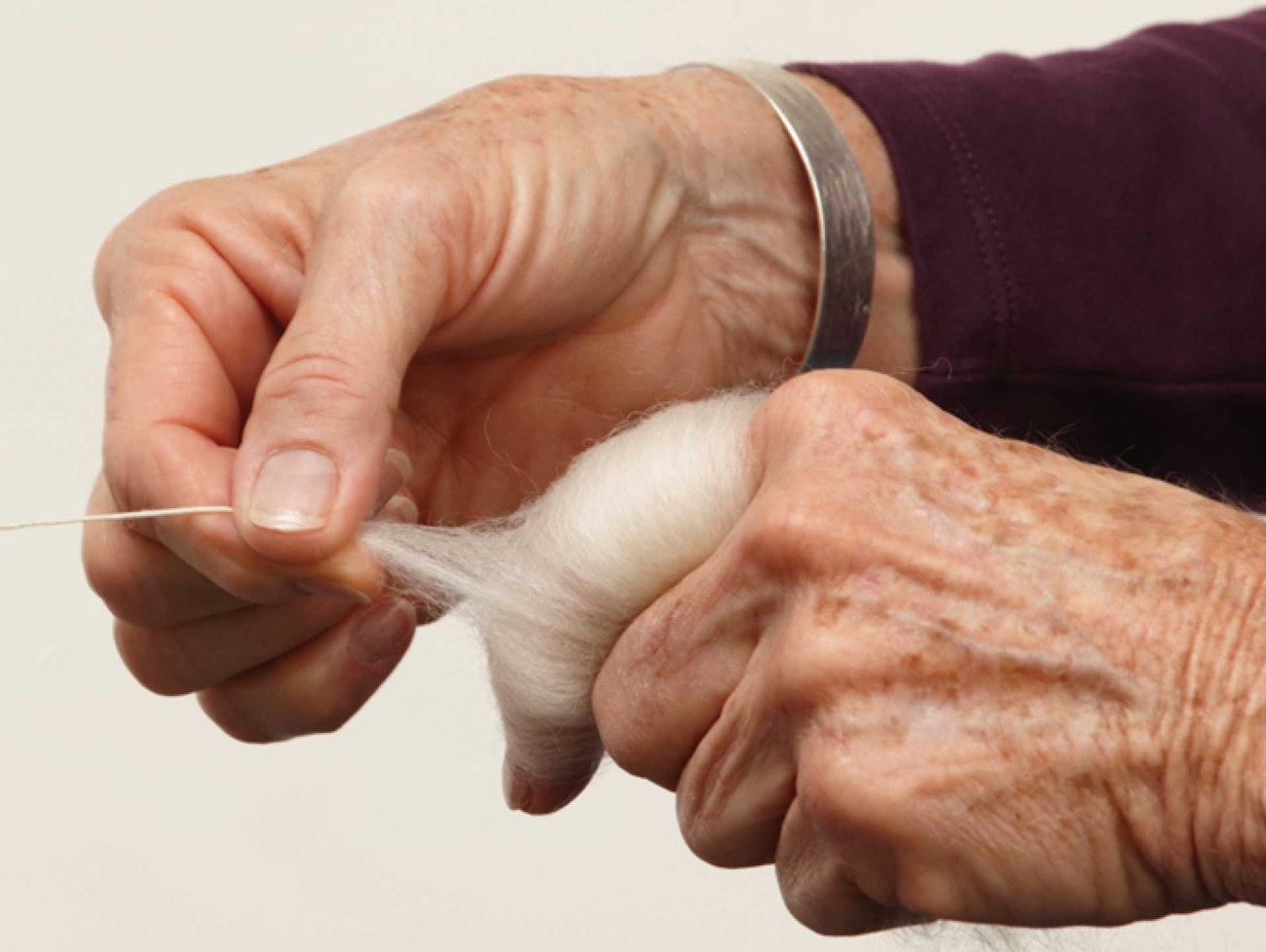
Figure 24
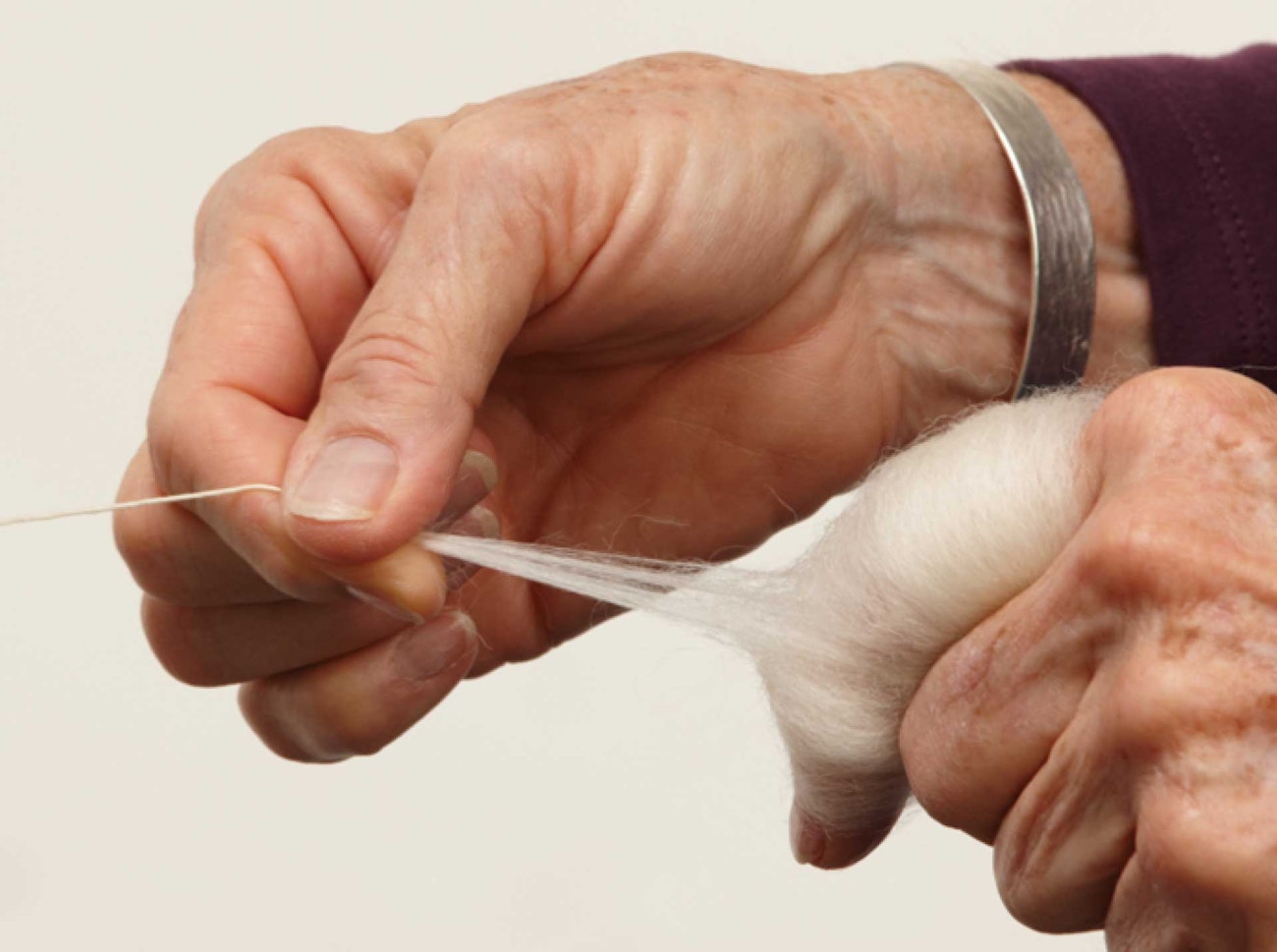
Figure 25
With these folded fibers you can also do a short forward draw with twist between your hands or a long draw (fig. 26). Sara Lamb spins silk over the fold for her beautiful kimonos (see the Summer 2001 issue of Spin Off).
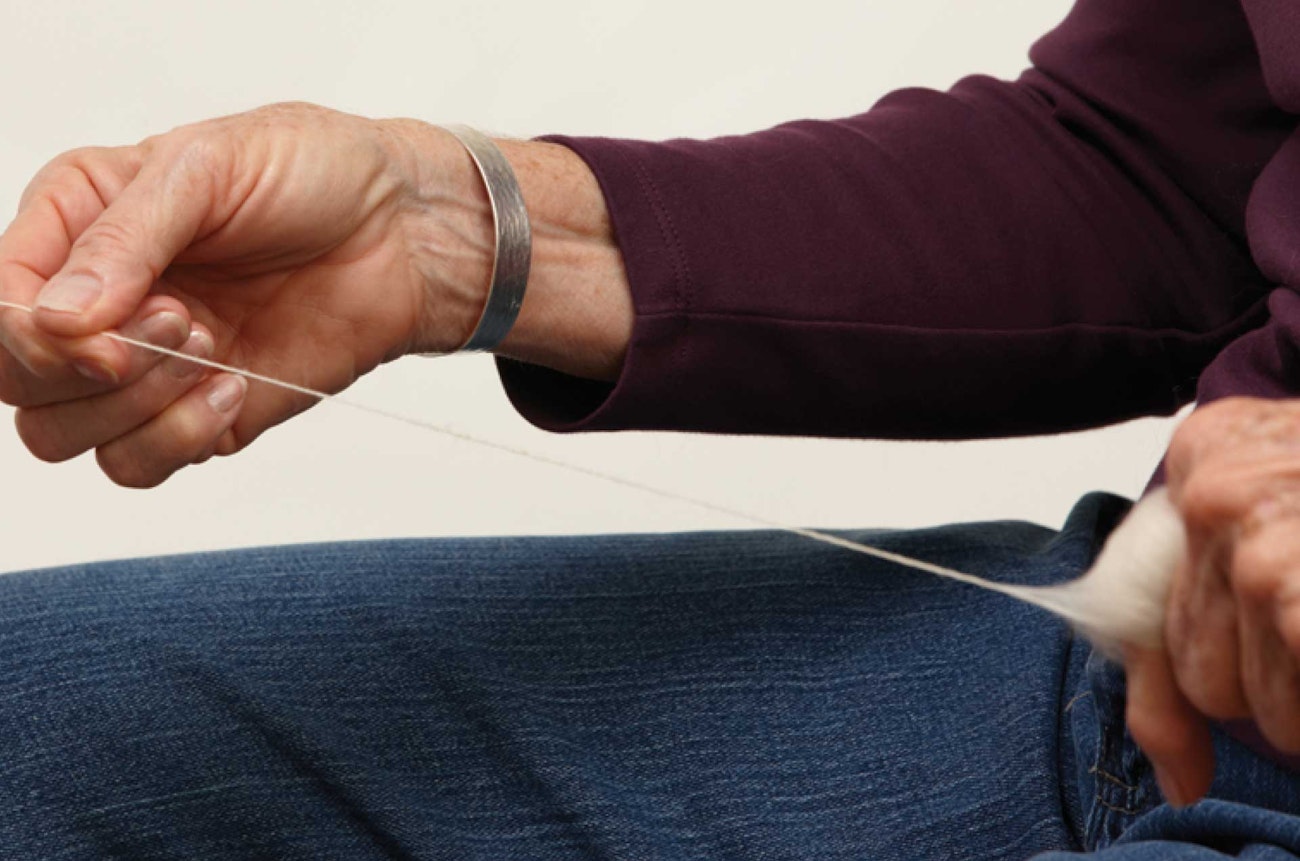
Figure 26
Twist loves combed fibers—it can run into them faster than the speed of light and leave equally fast. Twist can be deceiving; it goes into the fiber so easily you may think your yarn is stronger than it is. Stop and check your yarn to see if it has enough twist. Pull out a length of yarn and test it for strength by holding on to a section and tugging on each end to make sure it doesn’t drift apart (fig. 27). If it passes the test, then take that yarn and let it twist back on itself to see how it looks as a plied yarn (fig. 28).
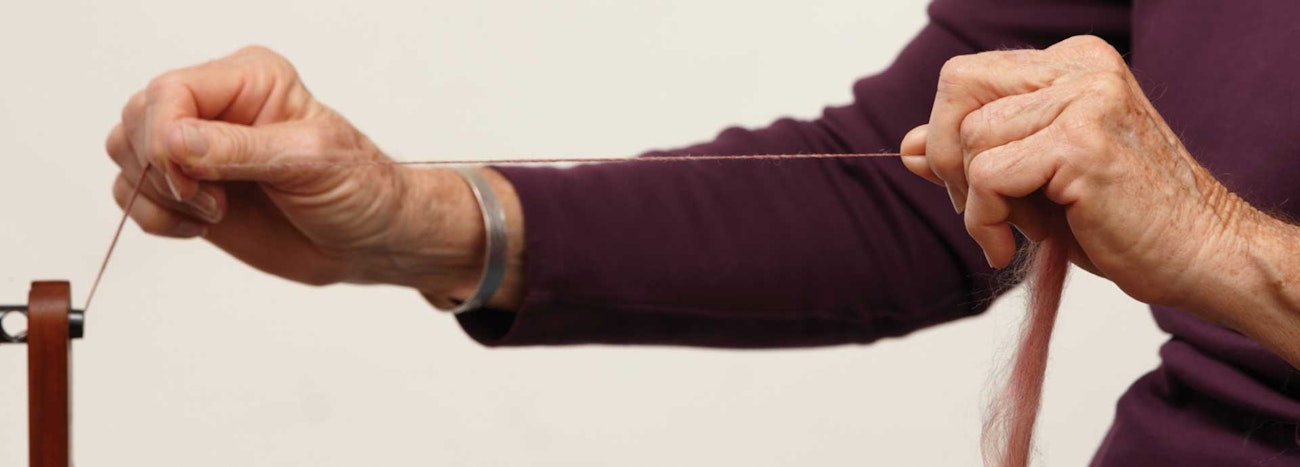
Figure 27
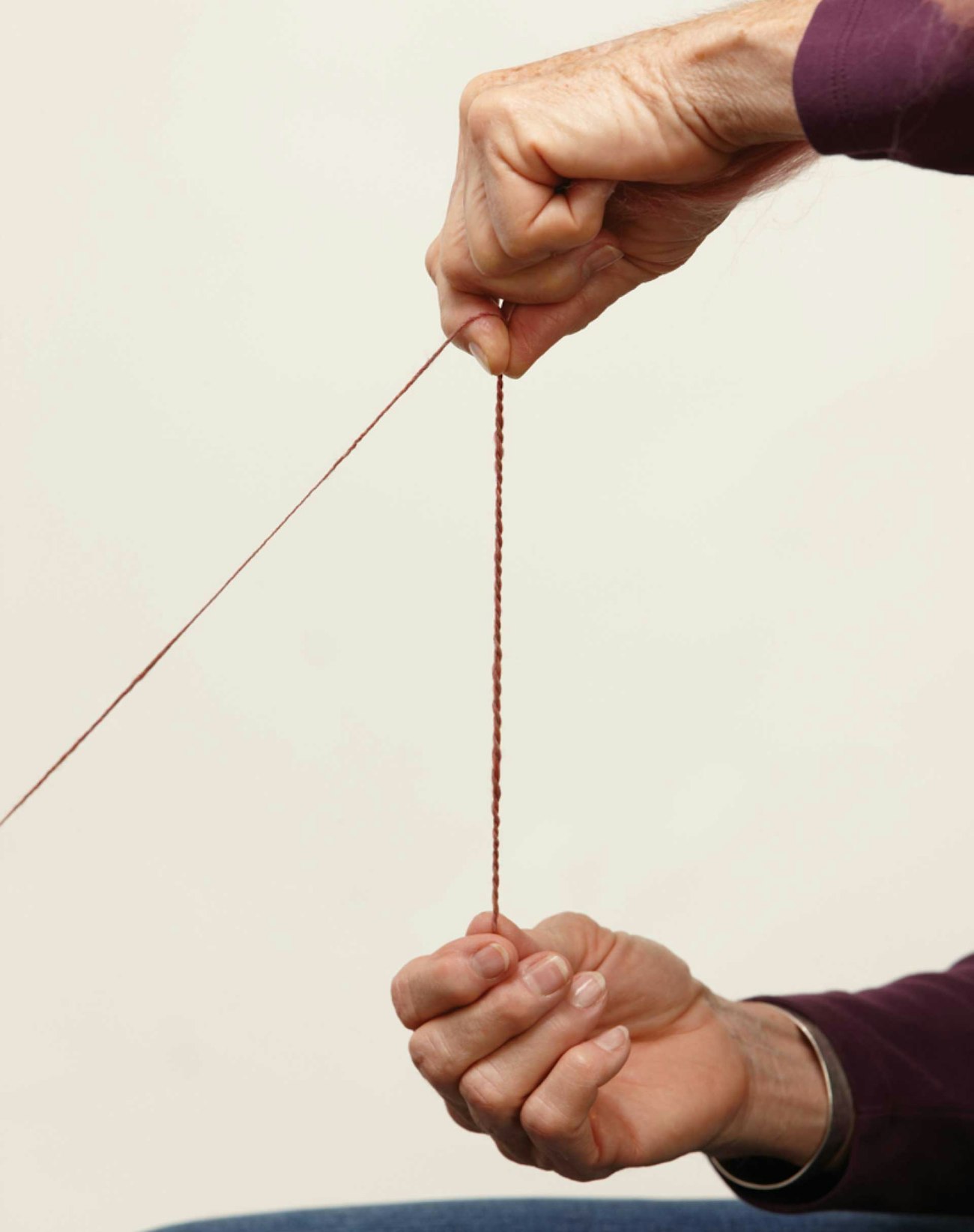
Figure 28
If you have too little twist, treadle once or twice before the yarn gets on the wheel. If there is too little twist and the yarn drifts apart, the twist will escape and weaken the yarn around it, so add a little twist back into your yarn before you start drafting again. If it happens often, loosen the tension on your brake band to allow a little more twist into your yarn. If you have too much twist, tighten the tension slightly on your brake band and get the yarn onto the wheel more quickly. With a little practice you can turn top into smooth, elegant yarns. Want some more ideas on worsted-style yarns? Check out the article by Carol Rhoades on lofty worsted-style yarns in the Summer 2010 issue of Spin Off.
Maggie Casey, author of Start Spinning (Interweave, 2007) and the videowdownload Start Spinning. She loves teaching spinning because she learns so much from her students.
Thsi article was published in the Winter 2010 issue of Spin Off.

